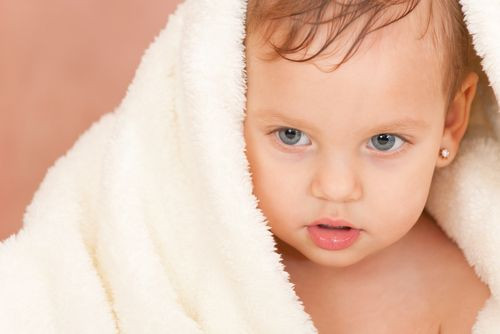Eczema Wet Wrap Therapy Helps Relieve Children Of Itchy Symptoms Without Topical Steroids, Other Medications

Children who suffer from eczema early on in life have to deal not just with painful, itchy skin but also with the psychological and social trauma associated with it. As more and more people are trying to adopt natural and alternative therapies, a treatment gaining popularity for eczema is wet wrap therapy.
Most children with moderate to severe eczema are prescribed topical steroids or immunosuppresants on a regular basis to control the condition. While symptoms do reduce with the use of topical steroids, some parents may be vary of using them on a long-term basis.
"Those medications can be effective, but they also can be a cause for concern for a lot of parents, especially when they're used long term," said Dr. Mark Boguniewicz, a pediatric allergist and immunologist at National Jewish Health in Denver. "Many families worry about the side effects those drugs might have on their child's blood pressure, or on their bones and kidneys," Boguniewicz said. "The problem is, there aren't many effective alternatives." Until now.
Although first described in 1987, wet wrap therapy was never used as a mainstream treatment for eczema. Now researchers at National Jewish Health, after evaluating its effectiveness, are recommending it even for severe cases of eczema.
The process is as simple as it sounds and involves wrapping the affected parts with a wet bandage. First, the child soaks in lukewarm water for about 20 minutes. After that, lotions or medicated emollients are applied to the affected areas while still damp. Afterward, the child is immediately dressed in wet clothing or wraps to seal in the moisture, followed by a layer of dry clothing. After at least two hours, the clothing is removed.
The straightforwardness of the technique makes it more appealing and, according to researchers who have published their results in the July issue of the Journal of Allergy and Clinical Immunology, it has profound effects.
After being treated by health care teams at National Jewish Health, children who took this therapy saw an average reduction of symptoms by 71 percent. The effects remained for almost a month after they returned home even without the use of medications prescribed for this condition.
"We took a step up, step down sort of approach to managing their symptoms in this study," Boguniewicz said. "We would apply the wet wraps two to three times a day, depending on the severity of the case, then we would taper the therapy down and only treat the affected areas as time went on. Over roughly four days we saw dramatic improvements."
How Does The Wet Wrap Miracle Work?
Wet wrap works by cooling, moisturizing, and absorption. As water gradually evaporates from the wet bandages, it cools the inflamed, itchy skin. The lotions keep the skin moisturized for longer, and since wet skin is also good in absorbing, the moisturizers penetrate right to the deeper layers of the skin, providing relief.
As part of the study, 72 children with severe to mild eczema were evaluated. Their severity was measured using SCORAD (Scoring Atopic Dermatitis) and ADQ (AD Quickscore) measurements. The most severe cases were given a score of 50 and over, moderate cases between 25-49, and mild cases were those that scored less than 25.
"When these children arrived, their mean score was right around 50, so they were severe cases," Boguniewicz said. "When they left, their mean score was less than 15. That kind of improvement, in just a short amount of time, was very, very dramatic."
The researchers site the case of 4-year-old Lucie Karazim, from Indianapolis, Ind., one of the success stories of this therapy. Lucy was diagnosed with eczema at just 4 months of age. After years of strong medications and steroids, she was finally referred to the National Jewish Health, where she was part of the wet wrap study. "It was very labor intensive the two weeks we were at National Jewish Health, but it was worth it," she said. "The treatment just makes sense, and the best part is, we were able to back off a lot of our medications when we left and established a new baseline for her," said her mother in a press release.
But Boguniewicz is quick to point that though it sounds simple, it’s a proper medical procedure to be carried out under supervision.
"You can't just try this on your own because overuse can do more harm than good," he said. "You first want to familiarize yourself with the concept at our website and talk to a specialist about it. We have a lot of material that can help you determine if this is the right approach for your child."
Eczema is estimated to affect one in five children, and genetic predisposition is thought to be a contributing factor. While most children get cured of infantile eczema or atopic dermatitis as they grow older, it can be an extremely irritating and painful condition while it lasts. Topical corticosteroids, antihistamines, and oral or topical antibiotics are prescribed as treatments.
Wet wrap therapy also known as "soak and seal," used in combination with conventional therapies, has proven to be useful in several cases.
Source: Boguniewicz M, Kinnert M, Nicole N. Journal of Allergy and Clinical Immunology. 2014.



























